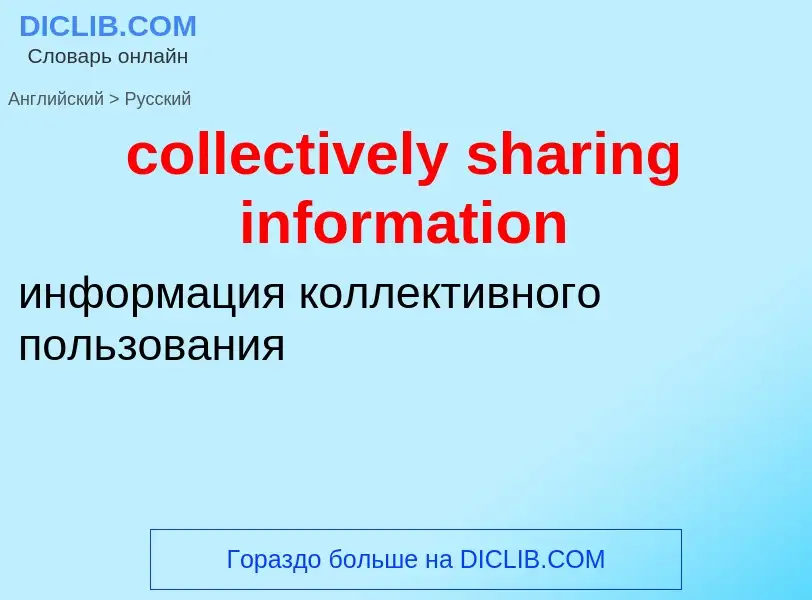Перевод и анализ слов искусственным интеллектом ChatGPT
На этой странице Вы можете получить подробный анализ слова или словосочетания, произведенный с помощью лучшей на сегодняшний день технологии искусственного интеллекта:
- как употребляется слово
- частота употребления
- используется оно чаще в устной или письменной речи
- варианты перевода слова
- примеры употребления (несколько фраз с переводом)
- этимология
collectively sharing information - перевод на русский
общая лексика
разделение времени, режим разделения времени
метод организации одновременного многотерминального доступа многих пользователей к однопроцессорному или многопроцессорному компьютеру (вычислительному ресурсу). Реализуется, в частности, в диспетчере задач операционной системы за счет выделения каждой задаче постоянного или переменного кванта времени так, что у пользователя создается впечатление единоличной работы с системой
разделение времени
синоним
Смотрите также
Википедия
Information exchange or information sharing means that people or other entities pass information from one to another. This could be done electronically or through certain systems. These are terms that can either refer to bidirectional information transfer in telecommunications and computer science or communication seen from a system-theoretic or information-theoretic point of view. As, "information," in this context invariably refers to (electronic) data that encodes and represents the information at hand, a broader treatment can be found under data exchange.
Information exchange has a long history in information technology. Traditional information sharing referred to one-to-one exchanges of data between a sender and receiver. Online information sharing gives useful data to businesses for future strategies based on online sharing. These information exchanges are implemented via dozens of open and proprietary protocols, message, and file formats. Electronic data interchange (EDI) is a successful implementation of commercial data exchanges that began in the late 1970s and remains in use today.
Some controversy comes when discussing regulations regarding information exchange. Initiatives to standardize information sharing protocols include extensible markup language (XML), simple object access protocol (SOAP), and web services description language (WSDL).
From the point of view of a computer scientist, the four primary information sharing design patterns are sharing information one-to-one, one-to-many, many-to-many, and many-to-one. Technologies to meet all four of these design patterns are evolving and include blogs, wikis, really simple syndication, tagging, and chat.
One example of United States government's attempt to implement one of these design patterns (one to one) is the National Information Exchange Model (NIEM). One-to-one exchange models fall short of supporting all of the required design patterns needed to fully implement data exploitation technology.
Advanced information sharing platforms provide controlled vocabularies, data harmonization, data stewardship policies and guidelines, standards for uniform data as they relate to privacy, security, and data quality.


![[[Unix]] time-sharing at the [[University of Wisconsin]], 1978 [[Unix]] time-sharing at the [[University of Wisconsin]], 1978](https://commons.wikimedia.org/wiki/Special:FilePath/Unix Timesharing UW-Madison 1978.jpeg?width=200)
